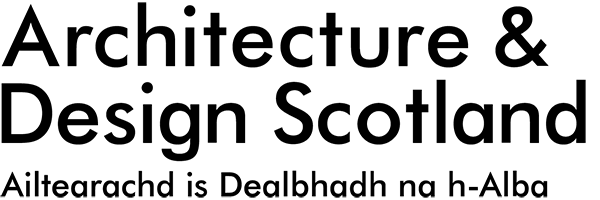Value of design in creating people-centred places

(19 November) Morag Bain, Principal Design Officer of Architecture and Design Scotland writes about how a grassroots community project transformed a neglected space into a thriving hub.
From making with pallets to a thriving community place
"A desk is a dangerous place from which to view the world." - Jean Le Carré *
Woodlands Community is in the area I live and is a great example of not viewing the world from a desk. On the Woodlands Community website, there are interesting recordings of how the whole project developed, how it is used and what it means to people.
Woodlands has social and ethnic diversity, so there was an awareness of both the history and the issues in the area. Conversations began 12 years ago, with volunteers who helped to clear the area. Many people were involved – the community, architecture students, designers. From making with pallets, the space has evolved into a thriving community garden and a community building with social and environmental impact.
With a diverse programme of events and activities, Woodlands is where you go if you want to grow flowers and vegetables, get your bike fixed, meet new mums, eat, hear music or have a chat.
20-minute neighbourhood
Over the years the community space has had a huge impact on people and their well-being – it is an important resource for emotional, social, food and environmental support and has helped change the surrounding area as it connects beyond its boundaries.
When I mention 20-minute neighbourhoods to people, and they ask me to explain what that means, I usually cite Woodlands as an example. Apart from this great asset of the Woodlands Community the area holds most of what you want and need - from green spaces to schools, to transport links, to a great cup of coffee.
Design as a process
Hopefully, in the future, more and more projects will move away from the - here is a space that needs to be filled and here is a brief written in relative isolation as the way forward to building something somewhere or to flatten existing places that could have a future – if that’s considered design at all, then that’s design with a very, very, small d.
So, getting out there and talking to and exploring with others is designed as a process used to help people explore and get an understanding of what is already there, how they feel about somewhere and what is needed. Thinking ahead and testing to achieve the best possible long-term outcomes for people, places and the planet.
Preventative design-led approaches
Design is about a collaborative, proactive approach to working with people and partners – bringing together skills and knowledge through talking, making connections, visualising, testing and finding solutions and making the right decisions.
Design thinking helps visualise and test the development of and changes to places. It helps to meet the challenges of the future needs of sustainable places and the well-being of the people who use them.
A preventative design-led approach to solving place-based issues and long-term planning. Design to build healthy sustainable communities - in the context of place-making means thinking ahead during the design phase to anticipate potential issues by incorporating features into places that discourage negative behaviours and promote safety, well-being, and positive social interaction.
Design can support many aspects of places – from environmental considerations to healthy living to safeguarding investment.
Learn more about the Woodlands Community by viewing their website here.
* a quote recently mentioned by Rodney Mountain (ENT Surgeon, NHS Tayside) at our event Place Forum 4: Preventative design
The value of design
In June 2024, we launched the Value of Design campaign to discuss what we mean by design and how we think it can improve people’s lives. This article is part of a series of short thoughtful pieces exploring how thoughtful design can transform communities, boost opportunities, and improve overall well-being.
